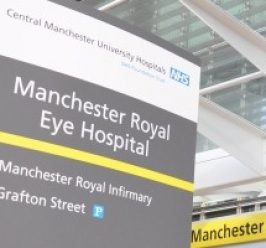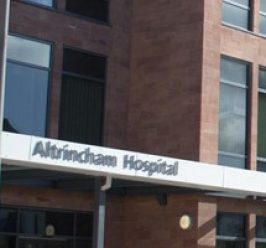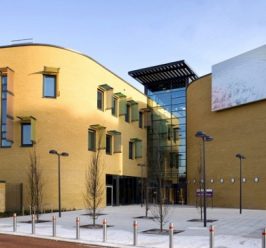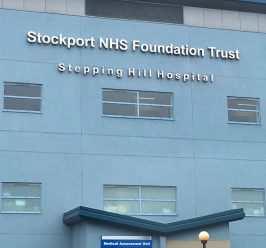What conditions do we treat?
Our service covers all major types of eye condition, including:
- Blocked tear ducts
- Strabismus – often referred to as squints
- Amblyopia – often referred to as lazy eye
- Refractive errors (focusing errors of the eye requiring glasses correction)
- External eye diseases and diseases of the cornea (clear window at the front of the eye)
- Children’s low vision
- Problems with the eye socket, tear glands and eyelidsRarer infantile and childhood eye problems
- Congenital, infantile and childhood cataracts
- Diseases of the retina including inherited retinal disease and retinal detachments
- Childhood and congenital Glaucoma
- Uveitis – an inflammatory eye condition
Genetic eye disorder conditions
- Metabolic eye diseases
- Disorders of eye development
- Anophthalmia and microphthalmia – children born without eyes or with very small eyes
In addition, to this the team cover a whole range of miscellaneous eye diseases and eye problems that may be seen in in conjunction with other specialists in the Children’s hospital.
What treatments do we offer?
The Manchester Royal Eye Hospital offer comprehensive treatment and advice related to the eye conditions listed above and more. The patient’s condition and the options for treatment will be discussed on an individual basis with the child and their parent/guardian. To help clinicians understand every patient’s eye condition, several tests may need to be carried out to help plan the best treatment. Some of these tests are described below:
Orthoptic Assessment
This is a test of the motility of the eyes. These tests are carried out by orthoptists who work closely with the ophthalmologists to assess vision, eye movements and binocular vision. The orthoptic examination is an essential assessment for children with squints and lazy eyes.
Dilating drops
In many cases it is necessary to look into the back of your child’s eye to assess the retina and optic nerve. In order to do this, we will need to put some eye drops into their eyes, which will make their pupil (black part of the eye) bigger. The eye drops can sting a bit when they are being put in for a few seconds. The doctors, nurses and orthoptists are very experienced at putting in eye drops and with reassurance from the parents/guardians, for most children there is usually no problem. However, for very anxious children we can involve members of the play team. It can take 20-40 minutes for the drops to work and the pupils to dilate (get bigger). For some dark eyes, it will be necessary to put more drops in and can take up to 60 minutes. It is normal after the drops have taken effect for the child to complain of blurred vision and difficulty reading or seeing things clearly up close due to the relaxing of the eyes focusing ability. It is also likely that the child will be more sensitive to bright lights due to the pupil dilating.
The drops can take up to several hours to stop working. You may need to warn school teachers that the child’s sight may be blurred. Occasionally, the effects of the eye drops can last until the following day in more sensitive children. If your child is more tired or conversely more active than usual or a little flushed (red) after these drops, this is normal – please do not worry. Do, however, feed this back to the ophthalmologist if your child needs to attend a follow up review.
Refraction
This test measures whether vision is long-sighted or short-sighted. Eyes will need to be dilated using the eye drops. The optometrist will then use different types of lenses which are held up close to your child’s eyes, and will shine a little light in each eye. The optometrist will try to use a trial frame on your child’s eyes and insert lenses into the frame in order to determine an accurate result. This is like a pretend pair of glasses and the optometrist will put lenses onto the frames while looking into the back of your child’s eye with a light. They will then be able to tell you what strength of glasses your child needs to wear. Once your child is old enough, a refraction test will be able to be performed without using the eye drops – this is called a subjective refraction.
Visual Field Testing
This test assesses the sensitivity of the child’s peripheral vision. In children old enough to understand and co-operate with the test, this can be carried out using a comprised automated visual field analyser. Orthoptists are also trained to carry out visual fields with a manual fields testing machine. This test can take around 20 minutes to carry out.
Fluorescein Angiography
This is carried out to help diagnose problems with the eye. Your child’s eyes will be dilated and a small amount of dye injected into their arm. Local anaesthetic will be applied to their arm in order to numb the area.
Electrodiagnostics
This is carried out to help understand how your child’s brain and eyes function together. Electrophysiology helps distinguish between different eye disorders that may have the same symptoms, and also helps us to understand if an eye condition is changing or stable.
Phlebotomy
Phlebotomy is where a blood sample is taken. Local anaesthetic cream will be applied to your child’s arm 30 minutes before the sample is taken.
B-scan-diagnostic ultrasound examination
A small wand (probe) is smeared with a liquid gel and moved over your child’s closed eyelid. The probe emits a harmless high frequency sound signal (ultrasound) into the eye and surrounding tissues. The probe receives sound reflections or echoes scattered back towards it, which it converts to form images of the internal structure of the eye or socket of the eye.
These examinations take just a few minutes to complete and are painless with anaesthetic required.
Children are examined while seated, whilst babies or young infants are generally examined while on a parent’s lap or in a portable car seat / buggy. Ideally, their head should be kept be as still as possible.
The individual performing the examination can make diagnoses from the moving images on the screen. Selected images are stored digitally.
Measurements of eye structures are generally made from any stored images once the examination is over. A report will be typed immediately following the examination and given to parents to take back to the referring ophthalmologist.
Who will I see?
Our team includes Consultant Ophthalmologists (eye doctors), who are specialists in diagnosing and treating children and young people’s eye problems, Nurses, Orthoptists and Optometrists; as well as support from Henshaws.
We also have an Eye Clinic Liaison Officer who can help parents to contact specialist support services for their children in the community and nearer their home.
Up to the age of 16, children who are outpatients are cared for in clinic H. If your child is an inpatient, they will stay in the Royal Manchester Children’s Hospital.
How to make an appointment
If you are concerned about your child’s eyes, you should see your GP or optician in the first instance. If they decide that further investigation is required by more specialist staff, they will arrange an outpatient appointment at Manchester Royal Eye Hospital or with another eye-care provider. If you choose to be treated here, we will send you a letter confirming the date, time and location of your appointment with us.
Your Child’s appointment
Upon receiving a referral from your GP or High street optometrist, a consultant will allocate your child to the most appropriate childrens’ eye clinic based on the information contained in your child’s referral. In many cases the consultant will request an orthoptic assessment to assess your child’s visual development and binocular vision. Further tests may be requested in advance, such as a refraction, visual fields or electrodiagnostic tests before seeing the consultant who will review the results of these tests and examine your child’s eye. Sometimes other members of the family may also have their eyes examined by the ophthalmologists, e.g. parents, if there is a suspicion that there is an inherited eye condition.
Where will I receive treatment?
The department is located in module H on the ground floor of Manchester Royal Eye Hospital.
From the entrance of the Eye Hospital walk past the main reception and you will find module H immediately on your right.
Tel: 0161 276 5628 – 9am – 5pm, Monday to Friday

Consultants
- Ms Jane Ashworth - Consultant Opthalmologist
- Mr Susmito Biswas - Consultant Paediatric Ophthalmologist
- Miss Anna Maino - Consultant Ophthalmologist
- Mr Vinod Sharma - Consultant Ophthalmologist
- Mr Bhamy Shenoy - Consultant Paediatric Ophthalmologist & Ophthalmic Surgeon



